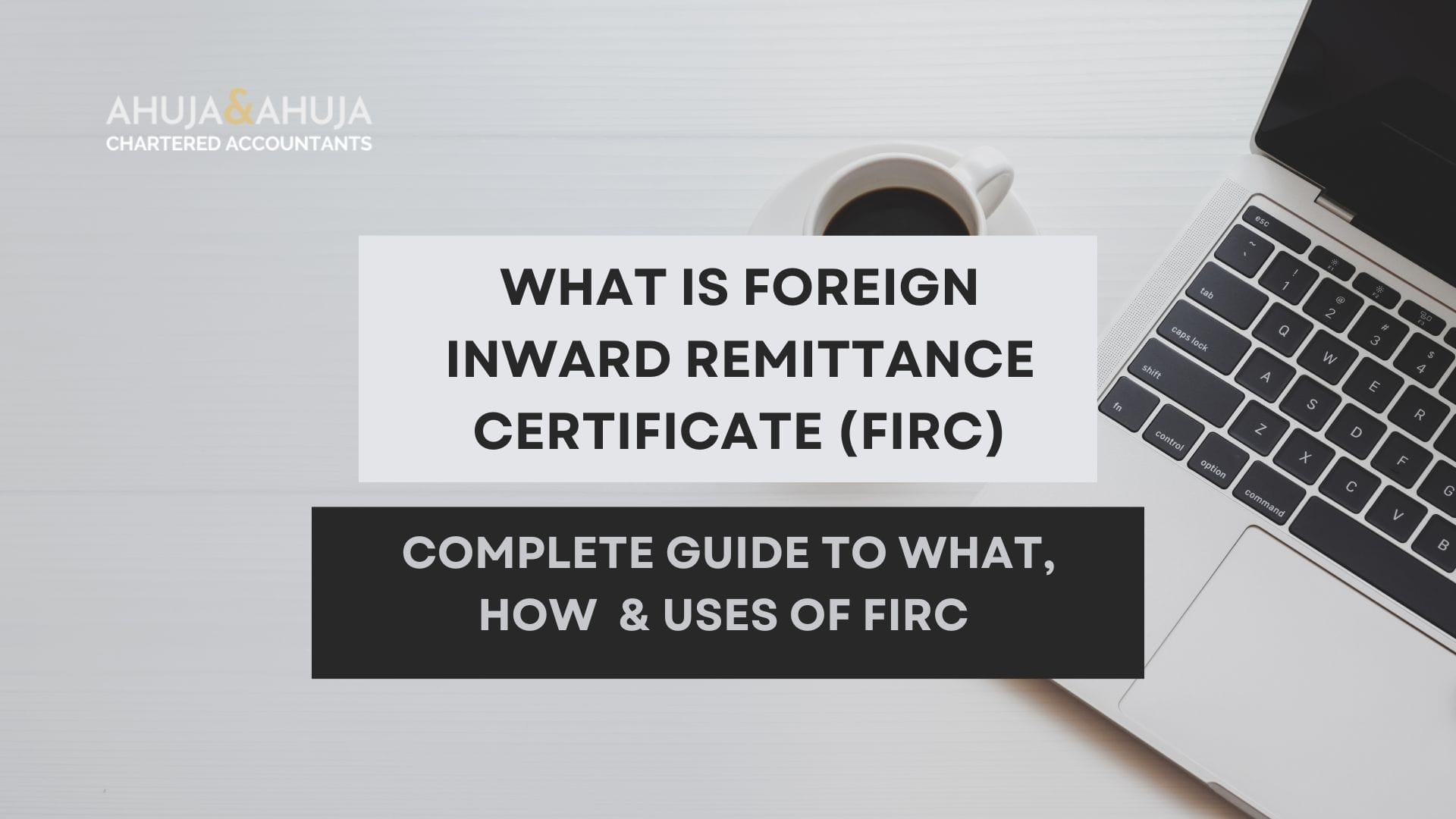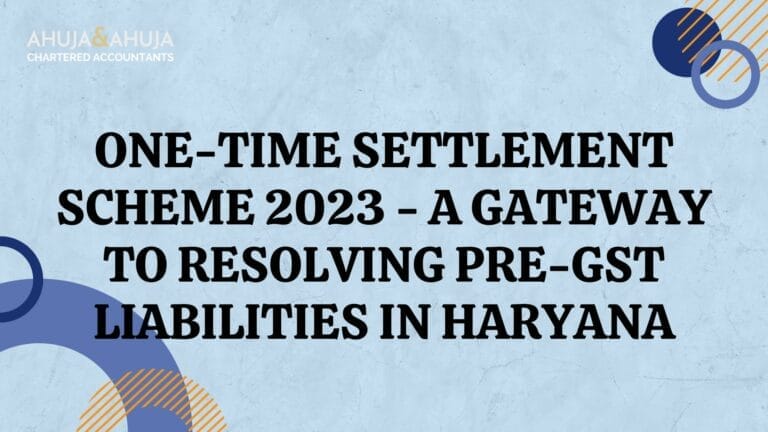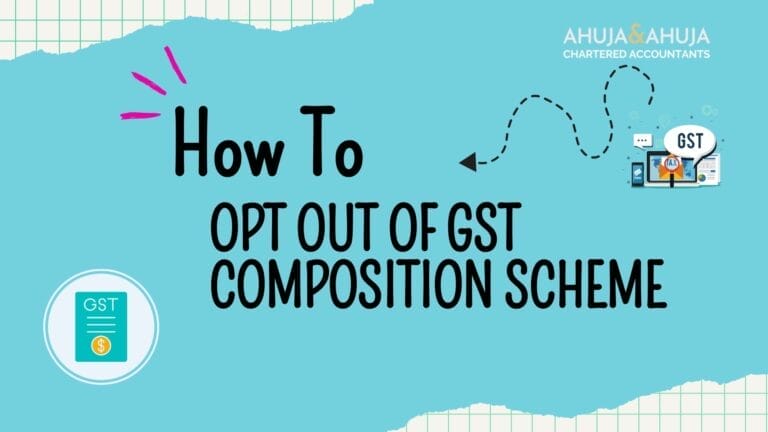A Complete Guide to Foreign Inward Remittance Certificate (FIRC). What is it, How to Get it, What are its Uses etc.
Understanding the Foreign Inward Remittance Certificate (FIRC)
Navigating the complex world of international finance can often be daunting, especially when it comes to meticulous documentation and legalities. For businesses exporting services or goods from India, a critical document that plays a significant role in handling international payments is the Foreign Inward Remittance Certificate, commonly known as the FIRC.
A Foreign Inward Remittance Certificate (FIRC) is a document that your bank issues as proof of international payments you receive for exports. It serves as an official custodian of all the remittance details including amount transferred, in both foreign currency and rupees, source of transfer, and other associated details necessary for regulatory purposes. One significant feature of the FIRC is that it fortifies the transparency and authenticity of the transaction.
In India, service exporters must secure an FIRC after receiving payments from abroad. Exporters utilize the FIRC to produce before various government authorities when applying for financial benefits, government support, or applying for RBI services.
The full form of FIRC, the Foreign Inward Remittance Certificate, signals its primary function – serving as proof of inward remittances to India. When Indian exporters receive payment in foreign currency, companies can present the FIRC document as concrete proof of these transfers. In other words, picture the FIRC as a receipt of proof for exporters – tangible evidence that they indeed have received a transfer from a foreign land.
In India, securing an FIRC is critical as it not only keeps track of an accountant’s international transactions but also helps accredit these transactions in the eyes of authorities like the Customs Department and the DGFT (Directorate General of Foreign Trade). In a world where foreign funds often become vehicles for illegal activities such as money laundering, having an FIRC certificate helps steer clear of potential legal troubles. It acts as a vest of protection, validating their receipts from international clients.
In the next sections, we will delve deeper into the specifics of the FIRC covering its contents, the procedure to get it, guidelines by RBI including e-FIRC, and its key uses amidst the Indian economic ecosystem.
Contents of FIRC:
- Beneficiary’s name: The FIRC includes the name of the individual or entity receiving the payment.
- Name and address of the person who sent the money: It mentions the details of the party that initiated the transfer.
- Name of the recipient of the funds: It states the name of the person or entity to whom the funds are being credited.
- Name and address of the first bank that processed the foreign transaction: This section reveals the bank involved in facilitating the international transfer.
- Demand Draft (DD), Telegraphic Transfer (TT), or cheque number: It specifies the reference number associated with the transfer method employed.
- Exchange rate applied to the transaction: The FIRC details the exchange rate at which the foreign currency was converted into Indian rupees.
- The amount denominated in foreign currency and Indian rupees: It clearly mentions the amount received in both foreign currency and its equivalent value in Indian rupees.
- The purpose of the remittance, according to the recipient of the money: This section explains the purpose for which the funds were sent and received.
- FIRC certificate download: The FIRC can be downloaded as proof of receipt of international payments.
The meticulous inclusion of these details in the FIRC helps stakeholders to verify the authenticity and legality of the transactions. These details also become crucial when approaching government authorities for financial assistance, government support, or GST refund services.
Now that we have gained a clear understanding of the contents of the FIRC, let’s move on to the next section, where we will discuss the procedure to obtain an FIRC and the guidelines set by the Reserve Bank of India (RBI).
Procedure to get an FIRC:
- The person receiving the payment from outside India, also known as the beneficiary, must apply for an FIRC request form from their bank.
- The FIRC request form requires the following information:
- Beneficiary’s name
- Name and address of the payee
- UTR (Unique Transaction Reference) number
- Recipient’s name
- Amount of transfer
- Purpose of remittance
- Date of transfer
- Account number
- Once the beneficiary submits the FIRC request form to the bank, the bank generates an Inward Remittance Message (IRM) on the Export and Data Monitoring Systems (EDPMS), which is the government export portal.
- The IRM number serves as the FIRC number. After paying the necessary fees, the bank issues the FIRC to the beneficiary’s account. The FIRC is also referred to as an Advice or Foreign Inward Remittance Advice (FIRA).
It’s important to note that according to the RBI and the Foreign Exchange Dealers Association in India (FEDAI) guidelines, only AD Category I banks in India are authorized to issue the FIRC. Since the discontinuation of physical FIRC in 2016 (except in the cases of FDI and FII), banks now issue electronic FIRC (e-FIRC).
Physical FIRC:
Physical FIRC was discontinued in 2016. Remitter banks now issue an alternative document called a statement, advice, or NOC to the home bank to enable the issuance of an e-FIRC.
Electronic FIRC (e-FIRC):
As per RBI requirements, AD Category I banks must report each inward remittance, including any outstanding transfers or advances received for the export of goods, services, or software, to the EDPMS. When the home bank receives the advice, statement, or NOC from the remitter bank, along with the required documents, they generate an IRM on the EDPMS. The IRM serves as the e-FIRC.
Now that we understand the procedure and guidelines for obtaining an FIRC, let’s explore the various uses of the FIRC in the next section.
Uses of FIRC:
- Evidence of International Payments: The FIRC serves as concrete evidence of receiving international payments in India. It acts as a crucial document for businesses to validate their receipt of funds from abroad.
- Claiming Export-related Incentives: The FIRC is a crucial document required by the Directorate General of Foreign Trade (DGFT) and the Central Board of Indirect Taxes and Customs (CBIC) for claiming various export-related incentives. It helps in verifying the authenticity of export transactions.
- Share Application Proof: FIRC acts as proof that a company or individual has received money in lieu of a share application. It serves as supporting documentation for company financial records.
- Obtaining Export Schemes and Licenses: The FIRC plays a vital role in obtaining schemes like the Export Promotion Capital Goods (EPCG) and Advance License. Authorities require the FIRC to validate the export transactions and related remittances.
- Exemption and Rebates on Foreign Currency Payments: FIRCs are required to claim tax rebates or exemptions on foreign currency payments received in India. It helps in ensuring that businesses receive the necessary tax benefits for their international transactions.
- Verifying Export Transactions: Various government agencies involved in verifying export transactions require FIRCs. It acts as a crucial document for customs clearance, trade compliance, and audits.
Is FIRC mandatory for a GST refund?
Yes, FIRC serves as proof of inward foreign currency remittances to an exporter or a company in India. FIRC is required to claim a GST refund for services or goods exported from India. It helps to authenticate the payments received from overseas parties and ensures that the GST refund being claimed is genuine and not fraudulent. The claim for a GST refund may not be accepted without FIRC, making it mandatory for claiming GST refunds for exports of services and goods.
By understanding the uses of FIRC, businesses can appreciate its significance in international transactions and ensuring compliance with government regulations.
In conclusion, the Foreign Inward Remittance Certificate (FIRC) serves as a crucial document for businesses involved in receiving international payments in India. It provides verifiable proof of inward remittances and plays a vital role in claiming various incentives, obtaining export schemes, and ensuring compliance with tax regulations. By maintaining accurate records of FIRCs, businesses can facilitate smoother processes and enjoy the benefits of their international transactions.
Frequently Asked Questions (FAQs):
Why is the FIRC important for exporters?
The FIRC is important for exporters as it serves as proof of inward remittance, validating the receipt of international payments for their goods or services. It is required for claiming various export-related benefits and complying with government regulations.
Can any bank issue an FIRC?
No, only AD Category I banks in India are authorized to issue the FIRC as per the guidelines of the Reserve Bank of India (RBI). These banks are designated by the RBI and have the authority to handle foreign exchange transactions.
What is the difference between physical FIRC and e-FIRC?
Physical FIRC refers to the physical certificate that was issued before 2016. However, since then, the physical FIRC has been discontinued (except in the cases of FDI and FII). Now, banks issue electronic FIRC (e-FIRC) in compliance with RBI guidelines. E-FIRCs are generated and maintained electronically, eliminating the need for physical certificates.
Is FIRC mandatory for receiving a GST refund?
Yes, to claim a Goods and Services Tax (GST) refund for exported goods or services, FIRC is required. It serves as proof of inward foreign currency remittances, verifying the authenticity of the payments received from overseas parties. Without FIRC, the claim for a GST refund may not be accepted.
Can an FIRC be downloaded?
Yes, once the bank issues the FIRC, it can be downloaded as proof of receipt of international payments. It is essential to keep a secure copy of the FIRC for record-keeping purposes.
Disclaimer
The materials provided herein are solely for educational and informational purposes. No attorney/professional-client relationship is created when you access or use the site or the materials. The information presented on this site does not constitute legal or professional advice and should not be relied upon for such purposes or used as a substitute for professional or legal advice.







